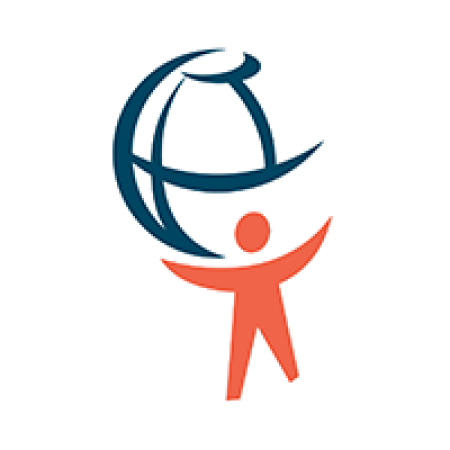Resources - International Education
Child Protection Standards
The ITFCP standards and expectations are an integral part of NEASC's Foundation Standards and must be substantially met by schools in order to be considered eligible for accreditation. Two sections, Essential Questions and Expectations, comprise NEASC’s approach to child protection:
Essential Questions
The following Essential Questions must be comprehensively considered and form the basis of whole school community dialogue on the school’s policies and practices related to safeguarding and child protection:
Schools have a duty of care to protect children and prevent them from harm, and act with a sense of urgency if a child is at risk of harm. These discussion questions focus on child protection in the context of abuse and neglect from any person. These include those in authority, those entrusted with the care of a child, child to child abuse and bullying or any person with access to children in the school. These questions are applicable to the safety and protection of day, home-stay and boarding students. The school should build partnerships with external agencies to enhance child protection practices. All questions are asked with reference to the regulatory framework, unique cultural context and sensitivities of a country/state. The role of the school in child protection cases is also determined by this cultural context and specific regulatory framework.
- Has the school created a definition of child protection with ensuing policies/procedures which are fully understood and followed by Board Members/ Governors/Owners, school leaders, staff, students, parents and volunteers?
- Do the school’s culture and values support and encourage good practice leading to enhanced child protection?
- Does the school comply with all legal and statutory requirements / obligations in relation to child protection within the country in which it operates? Does it have effective working relationships with support agencies (where they exist)?
- Does the school have robust policy/procedures, which are successfully implemented, to ensure that it only employs and engages people of sound moral character? If so, is the school compliant?
- Does the school have robust and fully implemented policies/procedures to ensure that all helpers, volunteers and contract workers are people of sound moral character and suitable to work with children?
- Does the school communicate publicly its child protection policy/procedures?
- Are child protection policies and procedures reviewed with sufficient regularity and systematically?
- Is there a designated Child Protection Officer (CPO) in the school with oversight of child protection procedures and related school policies?
- Do the school’s operational procedures support and encourage good practice leading to enhanced child protection, including:
- Training and support;
- Identification/Disclosure; and
- Reporting in line with policy.
- Are the school’s buildings and facilities, security and protection measures compatible with child protection and related policies?
- Does child protection education and on-line/virtual safety form part of the written and taught curriculum?
- Are students, staff and volunteers aware of what to do if they feel uncomfortable or have concerns about mistreatment or abuse?
- What measures are taken by the school to ensure the safety and protection of students in homestay accommodation or on residential trips and student-exchange programs, and to what extent are they successful?
Expectations
Expectations are based on the following principles:
- All children have equal rights to be protected from harm and abuse.
- Everybody has a responsibility to support the protection of children.
- All schools have a duty of care to children enrolled in the school and those who are affected by the operations of the school.
Policy
a. A values statement about the rights of the child has been developed and formally adopted by the school that is aligned with the responsibilities set out in the United Nations Convention on the Rights of the Child (UNCRC).
b. The school has developed and adopted an appropriate definition of child abuse including physical, emotional or sexual abuse, sexual exploitation, neglect and commercial or ideological exploitation and inappropriate behaviour of children towards other children.
c. The school has a policy and defined procedures approved by the School Board or equivalent body that ensures the safety and welfare of all students and describes how it is committed to preventing and responding appropriately if children are harmed, or if allegations of harm to children are made.
d. The school has specific child protection policies, practices and designated faculty with staff training programmes that ensure the safety and welfare of all students. This covers all aspects of school life and includes boarding facilities, homestay and residential arrangements and excursions, trips and students exchanges.
e. School safeguarding and child protection policies and procedures are subject to an annual scheduled review and revision.
f. The school has recruitment policies and executes rigorous recruitment procedures that ensure all employees and volunteers are of sound moral character and are suitable people to work with children and young adults.
People
g. The school has clearly defined leadership responsibilities for child safety and duty of care.
h. Formal procedures are followed for conducting criminal record and background checks on prospective and existing faculty, staff, volunteers, contractors, and others who may come into contact with students.
i. Formal procedures are followed to obtain and verify references for prospective and existing faculty and staff.
j. The school has developed and enacts a code of conduct and written guidelines for appropriate and inappropriate behaviours of adults towards children and children towards other children. All faculty, staff, volunteers and contractors acknowledge that they have read the code of conduct and agree to abide by it.
k. The school has a scheduled program of annual professional training for volunteers, contractors, faculty and staff on student safeguarding, child abuse prevention, recognition, intervention and reporting.
Procedures
l. The school shall have in place formal learning programs at all age levels related to child protection which cover areas such as bullying personal safety, physical abuse, manipulation, grooming, online safety, healthy sexual behavior, neglect and negligent behavior, self-harm, staying safe away from home, commercial exploitation and disclosing abuse. These programs to be delivered by members of faculty or external providers who are trained in these areas.
m. The school has developed structured procedures for reporting suspected or disclosed maltreatment or abuse, including historical disclosure, and adopts a formal policy identifying actions to be taken, including informing appropriate authorities.
n. The school develops meaningful and effective relationships with external organisations and bodies that are able to provide appropriate support and advice on matters related to child protection.
o. Child protection measures are integrated with all procedures and systems (strategic planning, budgeting, recruitment, program management, performance management, procurement, partner agreements, risk management and management systems etc.).
p. Due regard is given to building and facility design, layout, designation and use to ensure best practice in child safety and protection, within the context of the host country.
Accountability
q. The school is cognizant of and complies with the legal, ethical and cultural expectations and requirements regarding child abuse within the country in which it operates.
r. All reports of suspected or disclosed abuse and any actions taken by the school are securely archived, regardless of the conclusions reached.

- NEASC recognizes completion of the ICMEC online course, Intro to Safeguarding: Child Safeguarding and Protection Training for Schools, as evidence of alignment with the NEASC Foundation Standards for International Education, within the ACE Learning Protocol, on safety.
In 2015 NEASC helped to develop and adopted a set of comprehensive child protection standards that NEASC-accredited and candidate schools must meet. The standards and expectations were developed by the International Task Force on Child Protection (ITFCP) and are based on extensive research conducted in cooperation with the International Center for Missing and Exploited Children (ICMEC).
Resources developed by task force members in order to assist adults who work with children and teens are available on the ICMEC Education Portal. We at NEASC fully support this important work and encourage you to visit the Education Portal for guidance in training staff and volunteers in your educational communities on topics such as awareness and prevention, responding and reporting, creating support networks, and curriculum resources.
This audit framework provided by ICMEC is a resource for schools to consider the structures and systems they have to keep students safe in an online setting:
Education action plan: eSafety Toolkit for Schools (Creating safer online environments)

- NEASC recognizes completion of ECIS Child Protection Certification as evidence of alignment with the NEASC Foundation Standards for International Education, within the ACE Learning Protocol, on safety.
The courses are designed for three distinct audiences, enabling schools to meet compliance standards for accreditation or inspections for support staff, teachers and leaders, governors and owners
For more information, please visit the ECIS website
The US Office of Overseas Schools, CASEL, and ICMEC partnered to engage an international team of educators, school leaders, counselors, caregivers, students, and heads of school-affiliated international organizations to develop and review new Social Emotional Learning & Child Self-Protection (SELCSP) Standards and Benchmarks for International Schools which were released in the fall of 2023.
Learn more

